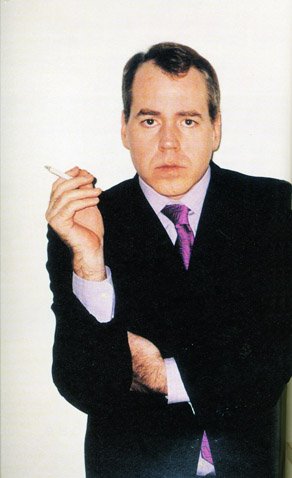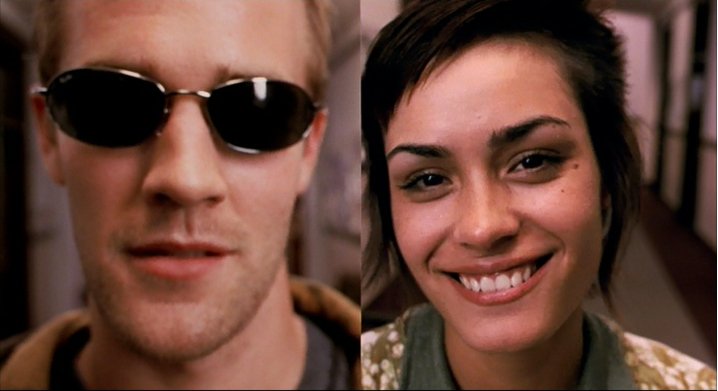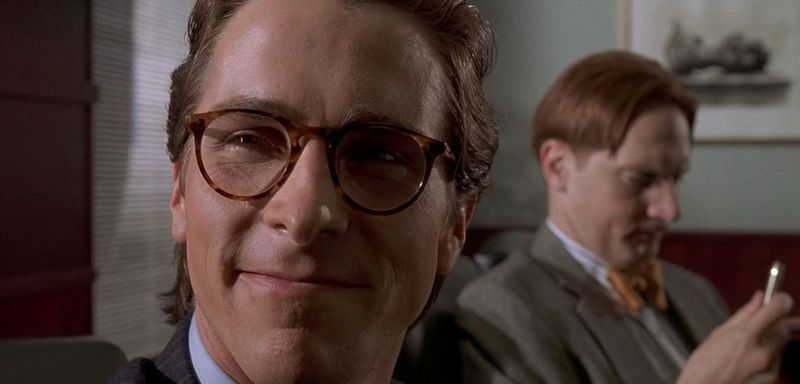Literature on Film | Part 4 | Bret Easton Ellis Adaptations are Notoriously Hit & Miss
“People are afraid to merge on freeways in Los Angeles” – Less Than Zero

The enigmatic and resonant first line of Bret Easton Ellis’ debut introduced us to a La La Land of dead souls indulging in excess of all kinds. But for a native Los Angelean, Ellis did his damnedest to escape, attending Bennington College in Vermont and then settling in Manhattan, before eventually returning to the company town and abandoning novels for screenplays. Ellis has written seven books, four have been adapted, and two of those have been set in Los Angeles. And yet they are by far the weakest of the Ellis adaptations…
Less Than Zero was a publishing sensation, hitting the bestseller lists in 1985 just before the 21 year old Ellis began his final year at Bennington. Influenced by Joan Didion and Ernest Hemingway, Ellis had been working for years on reportage of his contemporaries’ behaviour, and in the published work recorded (without obvious moralising) observations of depraved behaviour by fictionalised college kids in 1980s LA. Clay returns from New England for Christmas and falls back into the orbit of ex-girlfriend Blair, junkie friend Julian, and their drug dealer Rip. Ellis largely dispensed with plot, as these privileged kids blankly wandered through a drug-fuelled bacchanalia of bisexual promiscuity, their parties centred round snuff films and rapes. Hollywood adapted the novel with lightning speed and carefully inserted a moral. Julian (Robert Downey Jr) now had to die as tragic warning to no longer bisexual Clay (Andrew MacCarthy) to mend his ways, which no longer needed much mending. This version of youthful excess had bafflingly little to do with Ellis’ controversial source material. Indeed playwright Michael Cristofer was quoted in the New York Times howling at how his original screenplay had been rejected for a sanitisation of the nihilistic novel.

“I stand back from the unfinished canvas. I realise that I would rather spend my money on drugs than on art supplies” – The Rules of Attraction (novel)
While Hollywood was premiering his debut – mangled to appeal to perceived Reaganised teenagers – Ellis published his sophomore novel The Rules of Attraction, in which the influence of Reaganism is present in the Freshmen wanting a weight room and vetoing Louis Farrakhan as a speaker. Camden College life in the 1985 Fall term is narrated in short vignettes by Sean Bateman, Paul Denton, Lauren Hynde, and some secondary characters. An unreliable picture emerges from their overlapping experiences at parties, cafeteria lunches, hook-ups, classes, and trips to town. Denton narrates a secret affair with Bateman, Bateman narrates a minor friendship with Denton, Bateman and Lauren hook up for a disastrous relationship which both record very differently, and Bateman’s secret admirer (who he thought was Lauren) kills herself when he sleeps with Lauren. STDs and abortions are the frequent price of the casual sex merry-go-round of Camden’s never-ending party, and Lauren pays in full. Ellis’ dialogue is a marvel, with one-liners aplenty in concisely captured conversations, while the trademark pop culture references (everybody is listening to Little Creatures) are married to more nuanced narration. Denton, the most self-aware and self-critical character, eschews auditioning for the Shepard play because his life already is one. Spielberg is memorably critiqued for being secular humanism not rigorous modernism, but mostly these intelligent characters play dumb because excess is what’s expected.
“What does that mean? Know me? Know me? Nobody knows anyone else. Ever. You will never, ever know me” – The Rules of Attraction (film)
Pulp Fiction co-writer Roger Avary adapted and directed the novel, and Ellis dubbed the 2002 film “the one movie that captured my sensibility in a visual and cinematic language.” The rise of independent cinema meant Avary could cast James Van Der Beek as Bateman without bowdlerising the novel. The film is alternately shocking (it opens with the rape of Shannyn Sossamon’s Lauren), hilarious (Denton [Ian Somerhalder] and Dick [Russell Sams] perform an entirely improvised dance to ‘Faith’ in their underwear), and romantic (an extended split-screen sequence shows Bateman and Lauren finally meeting at their Saturday morning tutorial). Avary stylishly plays out the climactic ‘End of the World’ party from three viewpoints before winding back to the start of term, and situates Camden in a temporal twilight zone; with broadband internet but a 1980s soundtrack of The Cure and Erasure. Avary radically changes Lauren’s character, by throwing many of her traits onto loose roommate Lara (Jessica Biel). Lauren is now a virgin, waiting for Victor to return from Europe, whereas in the book she waited on Victor while sleeping with Franklyn. From being a mirror of Bateman, who sleeps with her friend while being in love with Lauren, she becomes a Madonna. There’s no longer an alienated road-trip with Sean ending with an abortion, just as Sean’s affair with Denton is reduced to one split-screen scene implicitly showing Denton’s fantasy. Avary’s changes make more violent and consequential Bateman’s successive breaks with Lauren and Denton, when she tells Bateman he will never know her, and he repeats her lines to Denton. Denton and Lauren’s snowy encounter after the ‘End of the World’ party, scored by Tomandandy with electronic eeriness, becomes a haunting summation: “Doesn’t matter anyway. Not to people like him. Not to people like us.” Lauren’s momentary self-condemnatory thought, unsaid in the novel, is spoken and brings things close to Gatsby’s “careless people … they smashed up things and creatures and then retreated back into their money.”

“Sean calls at five from the Racquet Club and tells me to meet him at Dorsia tonight. He just talked to Brin, the owner, and reserved a table at nine. I don’t know what to think or how to feel” – American Psycho (novel)
Ellis’ third novel zeroed in on Reagan America’s lodestone of money, Wall Street, and introduced its most unhinged Master of the Universe: Patrick Bateman. Bateman, and his friends Van Patten, Price, and McDermott make c$190,000 tho. a year at Pierce & Pierce. They pursue ‘hardbody’ girls, snort Bolivian Marching Powder, and engage in one-upmanship in clothing, business cards, and fine dining. American Psycho is 400 pages long, largely because Bateman catalogues all this minutiae; so desperate is he to hide his homicidal impulses by fitting in. Bateman is so spectacularly superficial that he and his friends are mistaken for other suits daily. American Psycho is screamingly funny, from an elevator scene between Bateman and Tom Cruise, star of Bartender (sic), to a 16 page tour de force in which Bateman and friends squabble over the phone regarding dinner reservations. It’s a full 130 pages before Bateman actually attacks someone, and that’s immediately followed by a treatise on Genesis’ music. But when Bateman is humiliated by younger brother Sean (who strolls into Dorsia while Bateman can’t get a reservation) and ex-girlfriend Bethany (whose boyfriend co-owns Dorsia) he loses what little was left of his mind. Violence becomes increasingly frequent, outré, and so gorily detailed as to invite misreading…
“Look at that subtle off-white colouring. The tasteful thickness of it. Oh my God… It even has a watermark” – American Psycho (film)
Simon & Schuster dropped the novel because of a firestorm of protest mistaking the violence for a how-to manual, not satire. David Cronenberg plotted sidestepping the controversy by having Ellis pen a screenplay with no violence. Eventually I Shot Andy Warhol director Mary Harron co-wrote the film with Go Fish scribe Guinevere Turner, wrongly assuming their resumes prevented accusations of misogyny. Even without residual anger at the novel, the film’s development was a cause celebre when Oliver Stone and Leonardo DiCaprio almost pushed out Harron and Christian Bale. The opening titles proclaim the lightness of touch Stone would never have brought: You fear red drops from a knife are blood from Bateman butchering someone, but they’re from a chef making nouveau cuisine. Harron and Turner prioritise social satire over serial killing. The signature business card scene in which Bateman (Bale), Bryce (Justin Theroux), Van Patten (Bill Sage), and McDermott (Josh Lucas) one-up each other by infinitesimal gradations assumes far greater importance than in the novel. Bateman’s axe murder of Paul (Jared Leto) is hilariously mashed up with his lecture on Huey Lewis’ ‘It’s Hip to be Square’, and receives a brilliant new line as he hacks away – “Try getting a reservation at Dorsia now!” Harron approximates Bateman’s unreliable narration by alternating blackly comic killings (Bateman’s rampage after an ATM demands ‘Feed me a stray cat’ sees him regard his gun suspiciously after he explodes two cop cars with ease), with an unsettlingly cruel murder of a homeless man, and obvious slasher homage in Bateman chasing a victim with a chainsaw. But Detective Kimball (Willem Dafoe) investigating Bateman is too transparently an embellishment to provide a semblance of plot, while Harron admits the finale wasn’t as ambiguous as she intended. Instead of queasily suspecting Bateman really did kill a hobo, audiences too easily exhale in relief ‘Ah, it was all just in his head.’ Interestingly Harron came into conflict with the MPAA only over Bateman’s sex scene with two women. The sticking point was the blank stare he gave his camera while filming his sex-tape, it was too disturbing and had to go. That is to say, the total spiritual void of the character, hidden by superficial hedonism, the key note of all Ellis’ work, was unacceptable.

“Another line and he said that he understood me or something like that and I did another line and believed him because it is easier to move through the motions than not to” – The Informers
Ellis, rattled by American Psycho’s reception, went all George RR Martin with his next novel, and polished short stories about alienated teenagers and parents in LA, written between 1982 and 1986, to create a stop-gap publication, The Informers. He uses recurring characters (principally Graham Sloan, his sister Susan, and their parents William and Linda) to link together thirteen tales of rock star excess, crumbling marriages, and disintegrating families. Ellis also pays off repeated mutterings about dead bodies being found drained of blood with the unexpected reveal of one of the narrators as a vampire. The Informers delivers one hell of a jolt with ‘Letters from L.A.’ in which a Camden student writing back East looses all the individuality in her voice as her soul is deadened to the Valley drone.
And then unexpectedly in 2009 a film version with an Ellis screenplay arrived. But Ellis had co-written this with Arbitrage director Nicholas Jarecki for Jarecki to direct, after Jarecki had pitched him a way to adapt The Informers with the ambition of Mangolia. And in development hell Jarecki was ousted for Buffalo Soldiers director Gregor Jordan. Out went Brandon Routh’s storyline as vampire Jamie, and, for some reason, also all the comedy. Jordan’s The Informers breezes in at 98 minutes, instead of Jarecki’s planned 150 minutes. Jordan renders an impressively glossy 1983 Los Angeles, courtesy of a budget bigger than American Psycho and Rules of Attraction combined, and portrays the ménage a trois of Graham (Jon Foster), Martin (Austin Nichols), and Christie (Amber Heard) with eye-watering explicitness compared to Less Than Zero’s squeamishness regarding Clay’s sexual preferences. But the most vivid cinematic picture of Ellis debauchery can’t compensate for what Jordan bafflingly omits: comedy. Harron and Avary showcased the mad satire of Ellis’ writing in their films. Jordan, in tackling an LA story with a big budget, seems impelled to channel the earnest handwringing of 1987’s Less Than Zero. It wastes good actors; notably in the inert William (Billy Bob Thornton), Laura (Kim Basinger), and Cheryl (Winona Ryder) love triangle; while the kidnapped child storyline involving Jack (Brad Renfro) and Peter (Mickey Rourke) has its one saving grace reversed. The Informers tanked, and its financial failure may have scuppered future adaptations.
Ellis’ three subsequent books, Glamorama, Lunar Park, and Imperial Bedrooms remain unfilmed. Roger Avary holds the film rights to Glamorama, and unused footage (known as Glitterati) from Victor’s European trip in The Rules of Attraction represents a loose version of what he might do with Ellis’ absurdist espionage thriller. Lunar Park has been in development, but it’s hard to see its mix of Stephen King horror pastiche and self-parody of Ellis’ persona actually working cinematically, while Imperial Bedrooms would be a sequel to a forgotten 1987 film.
But if we get no more adaptations, at least two properly rendered Ellis’ world.
Featured Image Source

